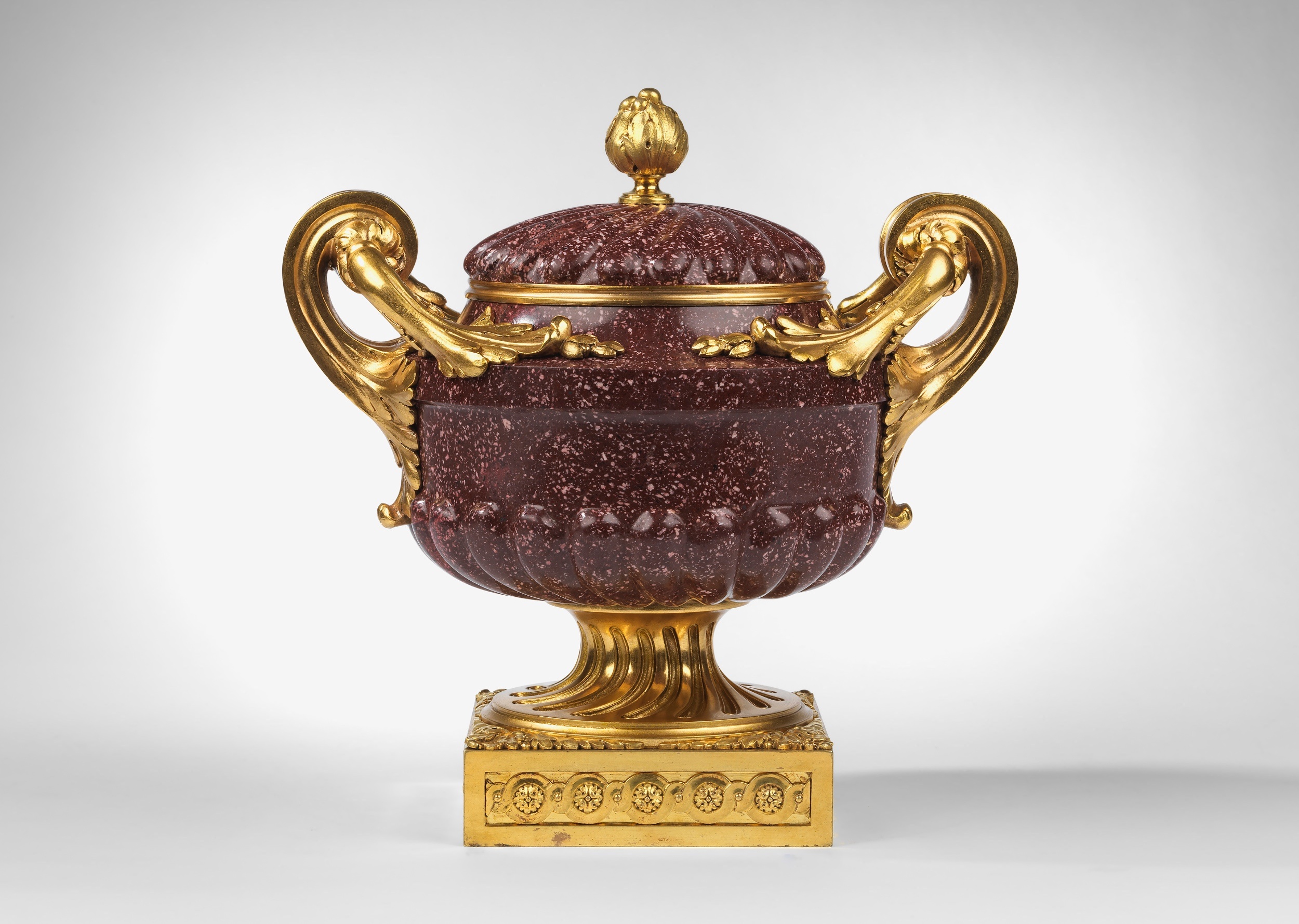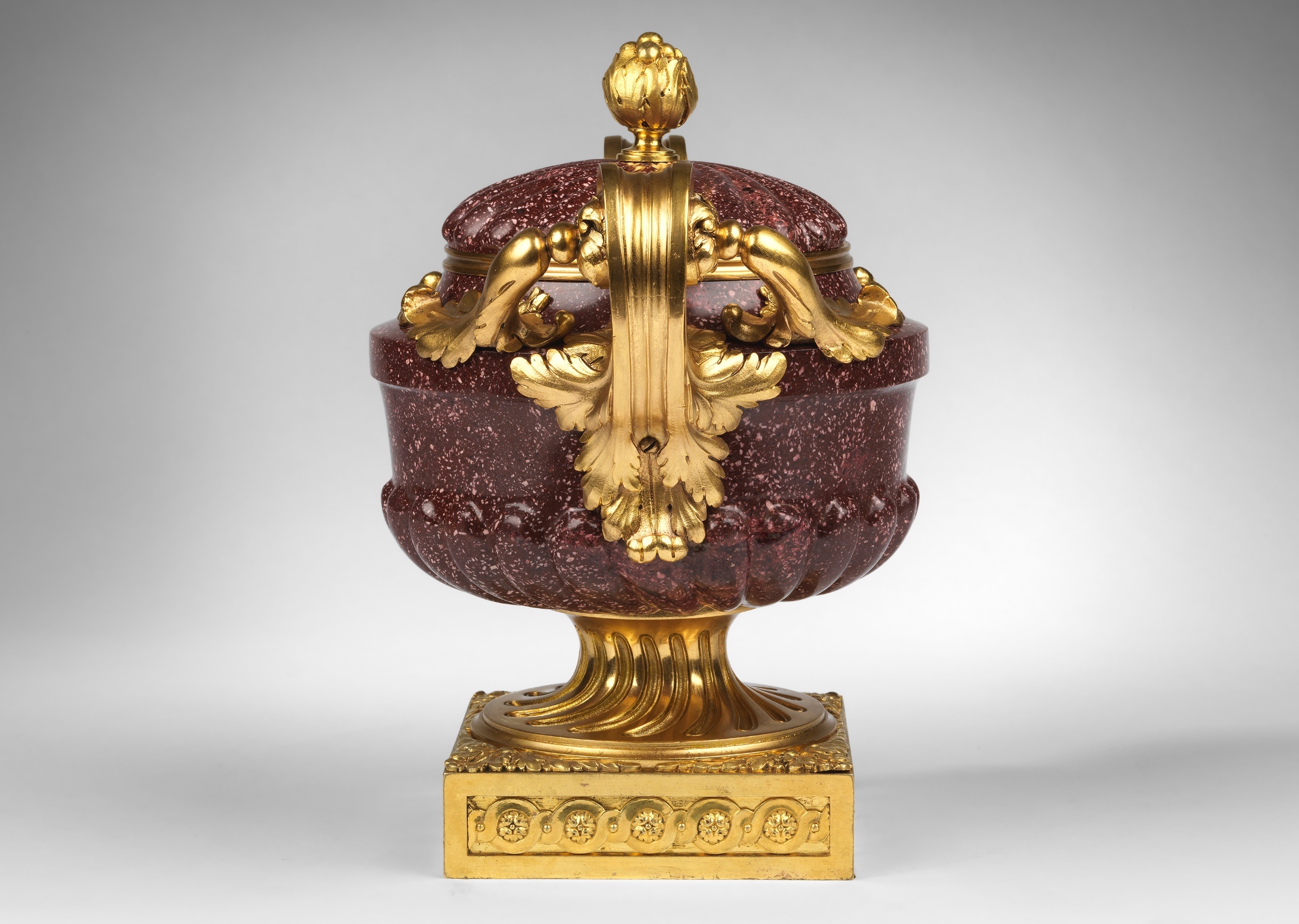



With a square ormolu base, decorated on all four sides with guilloche decoration ; supporting a circular ormolu plinth, decorated with strigillation supporting the porphry vase. Both the porphry body, and top, decorated with gadrooning with curved ormolu leaf work handles and leaf work ormolu finial.
See : Philippe de Malgouyres, Porphyre : La pierre pourpre des Ptolémées aux Bonaparte, exh. cat., Musée du Louvre, 2003-4,pp.158 no. 57.
In the Eternal City there was a supply of porphyry from ancient Rome in the form of abandoned columns, etc., from collapsed edifices. All of this originated from the quarries of Gebel Dokhan in the Eastern Desert of Egypt, which were opened in the 1st century AD and worked until the 5th and was reserved for imperial use. The quarries were particularly exploited during the reigns of the Emperors Nero, Trajan, Hadrian and lastly Constantine who used the porphyry to build the first St Peter’s Basilica which was started in 316. These pillars were considered so special that the Renaissance Pope Paul II (1464 – 1471) is reported to have said that two of St Peter’s columns are worth more than the whole city of Venice. The porphyry was quarried and worked by convicts and slave labour, including many Early Christians, condemned for their belief. In the Renaissance, and especially during the ensuing Baroque period, the material was reworked by the stone-cutters (scarpellini) of Rome to suit the taste of their patrons, who wished to assimilate themselves with the prestigious culture of the ancient world.
| Dimensions | CM | Inches |
|---|---|---|
| Width: | 27 | 10.5 |
| Depth: | 20 | 8 |
| Height: | 27 | 10.5 |